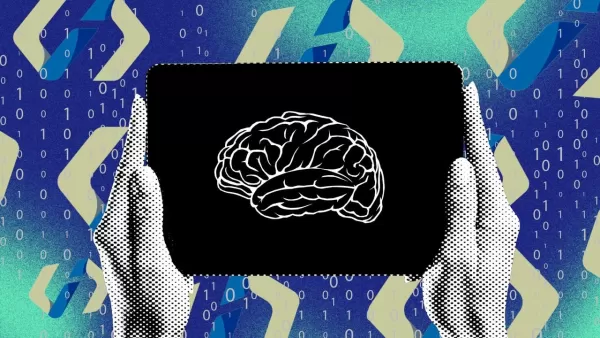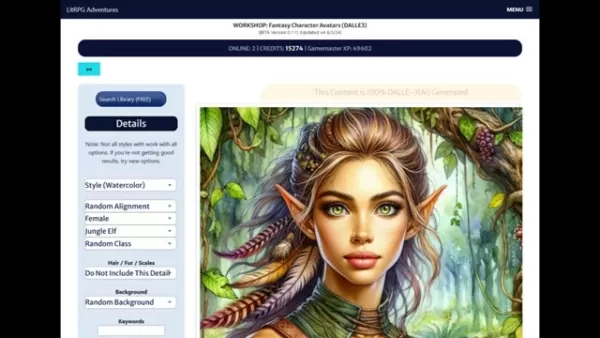Open Weight Definition Provides New Perspective on OSAID Debate

The debate over what constitutes open-source AI continues to evolve, with significant input from both developers and industry leaders. The Open Source Initiative (OSI) has been striving to establish a clear definition with its Open Source AI Definition (OSAID), but disagreements persist about what should be included. In response, the newly formed Open Source Alliance (OSA) has introduced its own framework, the Open Weight Definition (OWD), which seeks to address the unique challenges of AI development.
The OWD aims to strike a balance between closed and open-source AI by setting standards for what counts as "open source" in AI, especially for large language models (LLMs). It focuses on three key areas:
Key Components of the Open Weight Definition (OWD)
1. Model Weights Accessibility
The OWD emphasizes the importance of making model weights—the numerical values that connect nodes across AI layers—accessible to developers and researchers. These weights, determined during training, are crucial for understanding and improving AI models.
2. Dataset Information
While the OWD does not mandate full access to training data, it highlights the necessity of providing detailed information about the dataset's contents and collection methods. This transparency helps in assessing the model's performance and potential biases.
3. Architecture Transparency
The framework encourages the disclosure of the model's architecture, which can aid in further enhancements and modifications by the community.
Amanda Brock, CEO of OpenUK, supports the OWD, viewing it as a step toward better global collaboration. She critiques the OSI's OSAID, suggesting that the OWD's focus on disaggregating AI components is more practical. Brock's perspective is that defining the openness of individual elements like data, weights, and models is more effective than a broad, potentially unfit definition.
The OSA, led by founder Sam Johnston, aims to expand the traditional Open Source Definition (OSD) to include AI-specific elements like weights, proposing an "Open Source 2.0." This move comes amidst ongoing debates about the applicability of the OSD to AI, particularly as it relates to data and model weights.
In response to the OWD, Stefano Maffulli of the OSI pointed out that communities, such as the Linux Foundation, have already developed their own definitions of open weights. Additionally, Heather Meeker, a prominent open-source lawyer, highlighted the fundamental differences between software source code and Neural Net Weights (NNWs), arguing that the principles of open-source software licensing do not easily apply to NNWs due to their nature as learned knowledge stored in large matrices.
Meeker proposed the Open Weights Permissive License as a way to share NNWs under an open-source-like framework, emphasizing the original goals of open-source freedom. However, she acknowledged the challenges in applying these freedoms to NNWs, given their non-human-readable and non-debuggable nature.
Maffulli emphasized that the OSI's definitions, like those of the Linux Foundation, are community-driven, reflecting the collaborative nature of open-source development. He noted that the OSI is monitoring how AI practitioners apply these definitions in practice.
Despite these efforts, Meeker expressed doubt about the likelihood of any single definition becoming a de facto standard, citing the influence of regulatory frameworks, privacy regulations, and market dynamics.
The ongoing debate underscores a broader challenge: defining what truly constitutes open-source AI. While there is consensus that simply labeling an AI model or dataset as "open-source" does not suffice—as seen in the case of Meta's Llama—the community remains far from a unified definition.
Related article
 AI and Trump Fuel Gaza Controversy Amid Global Backlash
The digital era has created new challenges in distinguishing authentic content from synthetic media, particularly in politics and global affairs. A controversial AI-generated video portraying Gaza as an idyllic resort appearing on former President Tr
AI and Trump Fuel Gaza Controversy Amid Global Backlash
The digital era has created new challenges in distinguishing authentic content from synthetic media, particularly in politics and global affairs. A controversial AI-generated video portraying Gaza as an idyllic resort appearing on former President Tr
 AI-Powered D&D: Transform Your Tabletop RPG Experience
Artificial intelligence has transitioned from science fiction into a powerful ally for tabletop RPG enthusiasts, reshaping how we approach classics like Dungeons & Dragons. These cutting-edge tools are revolutionizing game preparation, injecting fres
AI-Powered D&D: Transform Your Tabletop RPG Experience
Artificial intelligence has transitioned from science fiction into a powerful ally for tabletop RPG enthusiasts, reshaping how we approach classics like Dungeons & Dragons. These cutting-edge tools are revolutionizing game preparation, injecting fres
 Exploring ElevenLabs: The Future of AI-Powered Voice Synthesis Technology
ElevenLabs is redefining digital audio experiences through cutting-edge AI voice synthesis, offering unprecedented naturalness in synthetic speech. As this technology reshapes various voice-dependent industries, it's essential to understand both its
Comments (10)
0/200
Exploring ElevenLabs: The Future of AI-Powered Voice Synthesis Technology
ElevenLabs is redefining digital audio experiences through cutting-edge AI voice synthesis, offering unprecedented naturalness in synthetic speech. As this technology reshapes various voice-dependent industries, it's essential to understand both its
Comments (10)
0/200
![FredGreen]() FredGreen
FredGreen
 April 26, 2025 at 11:10:52 AM EDT
April 26, 2025 at 11:10:52 AM EDT
I'm still wrapping my head around the OSAID debate, but this article helps a lot! It's fascinating to see how the Open Source Initiative is trying to define open-source AI. Still, it's a bit confusing. 🤔


 0
0
![WalterWhite]() WalterWhite
WalterWhite
 April 25, 2025 at 11:06:56 AM EDT
April 25, 2025 at 11:06:56 AM EDT
このツールは、オープンソースAIの議論について新たな視点を与えてくれました!OSAIDのニュアンスを理解するのに役立ちます。ただ、初心者向けに例を増やしてほしいです。全体的に素晴らしいリソースです!👀📖


 0
0
![AlbertRodriguez]() AlbertRodriguez
AlbertRodriguez
 April 25, 2025 at 5:04:16 AM EDT
April 25, 2025 at 5:04:16 AM EDT
Ainda estou tentando entender o debate sobre OSAID, mas este artigo ajuda muito! É fascinante ver como a Iniciativa de Código Aberto está tentando definir a IA de código aberto. Ainda assim, é um pouco confuso. 🤔


 0
0
![AnthonyHernández]() AnthonyHernández
AnthonyHernández
 April 24, 2025 at 11:21:50 PM EDT
April 24, 2025 at 11:21:50 PM EDT
OSAID 논쟁에 대해 아직 이해 중이지만, 이 기사가 많이 도움이 되었어요! 오픈 소스 이니셔티브가 오픈 소스 AI를 어떻게 정의하려고 하는지 흥미로워요. 그래도 아직 조금 헷갈려요. 🤔


 0
0
![WillGarcía]() WillGarcía
WillGarcía
 April 24, 2025 at 10:10:04 PM EDT
April 24, 2025 at 10:10:04 PM EDT
OSAIDの議論についてまだ理解中ですが、この記事がとても参考になりました!オープンソースイニシアチブがオープンソースAIをどう定義しようとしているのか興味深いです。ただ、まだ少し混乱しています。🤔


 0
0
![JonathanAllen]() JonathanAllen
JonathanAllen
 April 24, 2025 at 7:06:06 AM EDT
April 24, 2025 at 7:06:06 AM EDT
Essa ferramenta realmente me deu uma nova perspectiva sobre o debate de IA de código aberto! É super útil para entender as nuances do OSAID. No entanto, poderia ter mais exemplos para iniciantes. No geral, é um ótimo recurso! 👀📖


 0
0

The debate over what constitutes open-source AI continues to evolve, with significant input from both developers and industry leaders. The Open Source Initiative (OSI) has been striving to establish a clear definition with its Open Source AI Definition (OSAID), but disagreements persist about what should be included. In response, the newly formed Open Source Alliance (OSA) has introduced its own framework, the Open Weight Definition (OWD), which seeks to address the unique challenges of AI development.
The OWD aims to strike a balance between closed and open-source AI by setting standards for what counts as "open source" in AI, especially for large language models (LLMs). It focuses on three key areas:
Key Components of the Open Weight Definition (OWD)
1. Model Weights Accessibility
The OWD emphasizes the importance of making model weights—the numerical values that connect nodes across AI layers—accessible to developers and researchers. These weights, determined during training, are crucial for understanding and improving AI models.
2. Dataset Information
While the OWD does not mandate full access to training data, it highlights the necessity of providing detailed information about the dataset's contents and collection methods. This transparency helps in assessing the model's performance and potential biases.
3. Architecture Transparency
The framework encourages the disclosure of the model's architecture, which can aid in further enhancements and modifications by the community.
Amanda Brock, CEO of OpenUK, supports the OWD, viewing it as a step toward better global collaboration. She critiques the OSI's OSAID, suggesting that the OWD's focus on disaggregating AI components is more practical. Brock's perspective is that defining the openness of individual elements like data, weights, and models is more effective than a broad, potentially unfit definition.
The OSA, led by founder Sam Johnston, aims to expand the traditional Open Source Definition (OSD) to include AI-specific elements like weights, proposing an "Open Source 2.0." This move comes amidst ongoing debates about the applicability of the OSD to AI, particularly as it relates to data and model weights.
In response to the OWD, Stefano Maffulli of the OSI pointed out that communities, such as the Linux Foundation, have already developed their own definitions of open weights. Additionally, Heather Meeker, a prominent open-source lawyer, highlighted the fundamental differences between software source code and Neural Net Weights (NNWs), arguing that the principles of open-source software licensing do not easily apply to NNWs due to their nature as learned knowledge stored in large matrices.
Meeker proposed the Open Weights Permissive License as a way to share NNWs under an open-source-like framework, emphasizing the original goals of open-source freedom. However, she acknowledged the challenges in applying these freedoms to NNWs, given their non-human-readable and non-debuggable nature.
Maffulli emphasized that the OSI's definitions, like those of the Linux Foundation, are community-driven, reflecting the collaborative nature of open-source development. He noted that the OSI is monitoring how AI practitioners apply these definitions in practice.
Despite these efforts, Meeker expressed doubt about the likelihood of any single definition becoming a de facto standard, citing the influence of regulatory frameworks, privacy regulations, and market dynamics.
The ongoing debate underscores a broader challenge: defining what truly constitutes open-source AI. While there is consensus that simply labeling an AI model or dataset as "open-source" does not suffice—as seen in the case of Meta's Llama—the community remains far from a unified definition.
 AI and Trump Fuel Gaza Controversy Amid Global Backlash
The digital era has created new challenges in distinguishing authentic content from synthetic media, particularly in politics and global affairs. A controversial AI-generated video portraying Gaza as an idyllic resort appearing on former President Tr
AI and Trump Fuel Gaza Controversy Amid Global Backlash
The digital era has created new challenges in distinguishing authentic content from synthetic media, particularly in politics and global affairs. A controversial AI-generated video portraying Gaza as an idyllic resort appearing on former President Tr
 AI-Powered D&D: Transform Your Tabletop RPG Experience
Artificial intelligence has transitioned from science fiction into a powerful ally for tabletop RPG enthusiasts, reshaping how we approach classics like Dungeons & Dragons. These cutting-edge tools are revolutionizing game preparation, injecting fres
AI-Powered D&D: Transform Your Tabletop RPG Experience
Artificial intelligence has transitioned from science fiction into a powerful ally for tabletop RPG enthusiasts, reshaping how we approach classics like Dungeons & Dragons. These cutting-edge tools are revolutionizing game preparation, injecting fres
 Exploring ElevenLabs: The Future of AI-Powered Voice Synthesis Technology
ElevenLabs is redefining digital audio experiences through cutting-edge AI voice synthesis, offering unprecedented naturalness in synthetic speech. As this technology reshapes various voice-dependent industries, it's essential to understand both its
Exploring ElevenLabs: The Future of AI-Powered Voice Synthesis Technology
ElevenLabs is redefining digital audio experiences through cutting-edge AI voice synthesis, offering unprecedented naturalness in synthetic speech. As this technology reshapes various voice-dependent industries, it's essential to understand both its
 April 26, 2025 at 11:10:52 AM EDT
April 26, 2025 at 11:10:52 AM EDT
I'm still wrapping my head around the OSAID debate, but this article helps a lot! It's fascinating to see how the Open Source Initiative is trying to define open-source AI. Still, it's a bit confusing. 🤔


 0
0
 April 25, 2025 at 11:06:56 AM EDT
April 25, 2025 at 11:06:56 AM EDT
このツールは、オープンソースAIの議論について新たな視点を与えてくれました!OSAIDのニュアンスを理解するのに役立ちます。ただ、初心者向けに例を増やしてほしいです。全体的に素晴らしいリソースです!👀📖


 0
0
 April 25, 2025 at 5:04:16 AM EDT
April 25, 2025 at 5:04:16 AM EDT
Ainda estou tentando entender o debate sobre OSAID, mas este artigo ajuda muito! É fascinante ver como a Iniciativa de Código Aberto está tentando definir a IA de código aberto. Ainda assim, é um pouco confuso. 🤔


 0
0
 April 24, 2025 at 11:21:50 PM EDT
April 24, 2025 at 11:21:50 PM EDT
OSAID 논쟁에 대해 아직 이해 중이지만, 이 기사가 많이 도움이 되었어요! 오픈 소스 이니셔티브가 오픈 소스 AI를 어떻게 정의하려고 하는지 흥미로워요. 그래도 아직 조금 헷갈려요. 🤔


 0
0
 April 24, 2025 at 10:10:04 PM EDT
April 24, 2025 at 10:10:04 PM EDT
OSAIDの議論についてまだ理解中ですが、この記事がとても参考になりました!オープンソースイニシアチブがオープンソースAIをどう定義しようとしているのか興味深いです。ただ、まだ少し混乱しています。🤔


 0
0
 April 24, 2025 at 7:06:06 AM EDT
April 24, 2025 at 7:06:06 AM EDT
Essa ferramenta realmente me deu uma nova perspectiva sobre o debate de IA de código aberto! É super útil para entender as nuances do OSAID. No entanto, poderia ter mais exemplos para iniciantes. No geral, é um ótimo recurso! 👀📖


 0
0





























